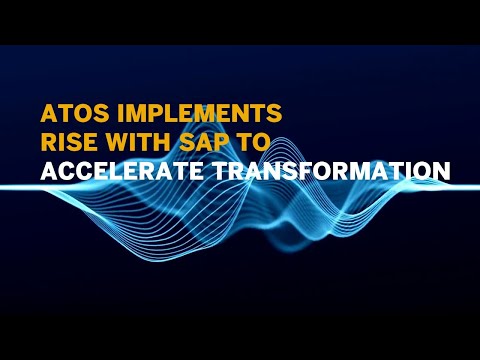There are two imperatives for building back better, says Robert Vassoyan, executive vice president of Healthcare and Life Sciences at Atos and member of the Group Management Committee. One is data equity — the collective ability to share and utilize data within large ecosystems and communities — and the other is employee engagement and experience.
There will be no recovery unless employees are fully engaged and their views on sustainability and new management styles are taken into account.
“We are very bullish about the post-COVID-19 era. We believe there will be a massive rebound,” Vassoyan says, reminding us that choices made in times of crisis are known to shape the world for decades. Think of Roosevelt’s New Deal that spurred growth and reforms after the Great Depression of the 1930s creating jobs and legacies like Social Security that have lasted to this day.
While it is not the only factor, COVID-19 could be the main accelerator driving economic and social change in our century. Digital transformation was already happening before the pandemic, but it was being adopted at a more leisurely pace. There was no sense of urgency to implement new ways of working and learning or providing services such as virtual care through digital channels.

Addressing the Digital Divide
In his position at Atos, Vassoyan’s mission is to help create a sustainable, high-quality global health system. This entails working with healthcare providers, insurance companies, and the life sciences industry to pivot from traditional patient treatment to actively promoting patient wellness both within, and increasingly outside, of hospital or laboratory settings.
Success in all industries will depend on a motivated workforce, values such as decarbonization and inclusion at the heart of the transformation, and partnerships like the one with SAP to help customers thrive in the new era.
Digitalization can be a double-edged sword. The pandemic has hastened the emergence of digital ecosystems consisting of suppliers, customers, and trading partners, all supported by digital platforms. Vassoyan maintains that around 70% of the value created in the next decade will come from these ecosystems and platforms as they create, share, and monetize data. In addition, digitalization has a direct impact on carbon neutrality, because it can reduce up to 20% of all CO2 emissions.
But in some ways the pandemic has further strengthened the digital divide. On one hand, technology was a key enabler for enterprises to set up home office for their employees, and it has enabled digital businesses such as e-commerce or e-banking to thrive. On the other hand, digital inequality reinforces social inequality. Many informal workers or people in insecure jobs still cannot use, or do not have adequate access to technology, thereby limiting their access to information, job opportunities, training, and social services.
How well we build back will be highly dependent on our collective ability to share and utilize data, the Atos executive says. Companies are sitting on vast amounts of valuable data that are difficult to safeguard, share, and monetize. Data equity requires initiatives to such as GAIA-X, a federated data infrastructure for Europe, or the International Data Space Association (IDSA), which provides safe data spaces for trusted partners governed by standards and certification for data exchange. Safe data spaces are a requirement for fruitful cooperation and limitless innovation in the data economy of the future.
Decarbonizing Is Key
At Atos, decarbonization is the underlying driver for change. It’s about operations and sustainability and it’s about reducing and eliminating carbon dioxide through a strategic approach leading to a carbon-free economy.
In the wake of the pandemic, the company decided to raise the bar. Initially targeted for 2035, the company brought its net-zero target forward to 2028. In 2020, Atos’s datacenter global energy consumption dropped by 15% while the share of renewable carbon-free electricity grew to 55% from 32% a year before. At the same time, the company is switching to an all-electric car fleet by 2024. Now, Atos is transferring knowledge and best practices to thousands of customers around the globe.
Vassoyan believes digital practices alone can have a direct impact on carbon emissions, dropping them by 20% globally. He also sees a lot of collaborative opportunities with SAP. But deploying technology is not enough. Companies must create tailored environments for employees and invest in changing the management culture. Only then can they achieve frictionless working models involving ubiquitous technology and flexible organization structures.
Rising Together
As a global leader in digital transformation, Atos sees cloud as the key vehicle for business changes, because it delivers speed, flexibility, and innovation. The company recently announced Atos OneCloud, a unique initiative to help enterprises speed up their move to the cloud with the help of Atos’s consulting services, application transformation expertise, and cloud accelerators.
As the executive sponsor of the SAP relationship, Vassoyan is excited about implementing RISE with SAP, an offering that brings together the SAP solutions and services needed for such a shift. Atos is implementing RISE with SAP with the hyperscalers, leveraging their bare metal systems and solutions. During the first phase, Atos will move its current SAP S/4HANA software to the cloud, so that it can adopt the latest leading business practices and product innovations delivered by SAP. This will also allow Atos to share firsthand experiences, best practices, and benefits with its customers.
Vassoyan says SAP S/4HANA is an obvious choice for increased business agility, better insights, increased employee productivity, and improved operational efficiency. RISE with SAP enables a rapid conversion of existing enterprise resource planning (ERP) environments to SAP S/4HANA, and its cloud-based architecture enables Atos to leverage and retain existing systems while accelerating its own company-wide digital transformation.
RISE with SAP provides the best of both worlds – the robustness of a traditional on-premise application combined with the flexibility of subscription-based cloud economics. Atos benefits from the full ERP functionality, including add-ons and joint innovations with SAP, and from the ability to scale, innovate, and enhance.
It’s a win win for both SAP and Atos and its customers.
Follow me on Twitter: @magyarj



